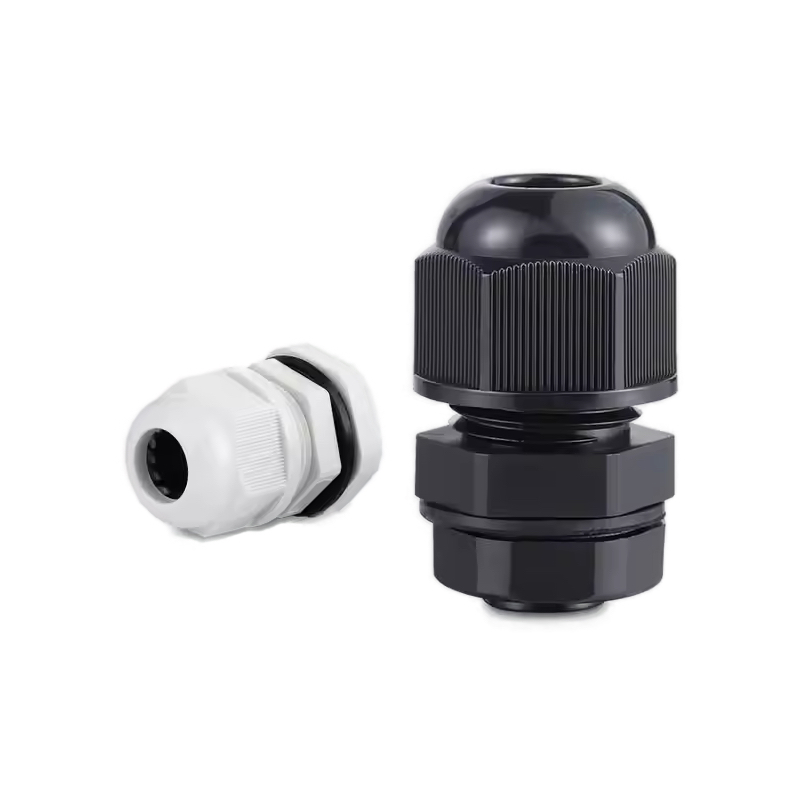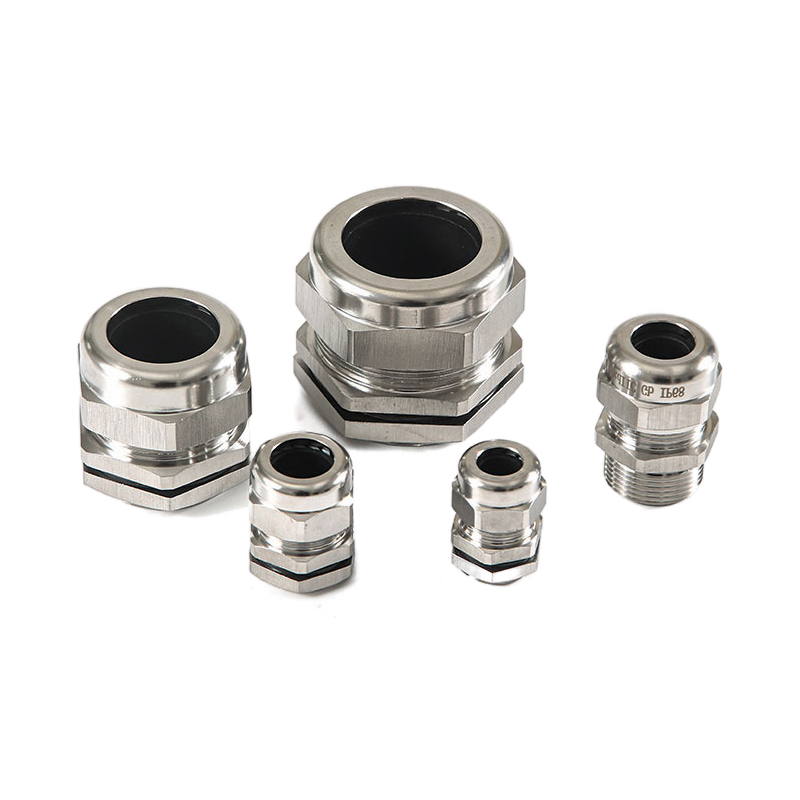Submersible pump failures cost water utilities millions in emergency repairs and service disruptions. Poor cable sealing is the #1 cause of premature pump failure.
Submersible pump installations require specialized IP68-rated cable glands with pressure compensation and corrosion-resistant materials to maintain reliable sealing at depths up to 200 meters while preventing water ingress for 20+ years.
Last month, Hassan called me in panic. His municipal water system’s main submersible pump had failed 50 meters underwater, leaving 50,000 residents without water. “Chuck, we need a solution that works for decades, not months.”
Table of Contents
- Why Do Standard Cable Glands Fail in Submersible Applications?
- What Makes Submersible Pump Cable Sealing So Challenging?
- Which Cable Gland Technologies Actually Work Underwater?
- How Do You Design a Fail-Safe Submersible Installation?
Why Do Standard Cable Glands Fail in Submersible Applications?
Understanding failure modes prevents expensive underwater disasters and service interruptions.
Standard cable glands fail underwater due to hydrostatic pressure1 exceeding seal design limits, causing catastrophic water ingress that destroys pump motors and control systems within hours of installation.
Hydrostatic Pressure Calculator
P = ρgh
Using gravity (g) = 9.81 m/s²
The Hydrostatic Pressure Problem
Most engineers underestimate the crushing force of water at depth. Here’s the physics that destroys standard glands:
Pressure Calculations:
- 10 meters depth: 2 bar (29 PSI) pressure
- 50 meters depth: 6 bar (87 PSI) pressure
- 100 meters depth: 11 bar (160 PSI) pressure
- 200 meters depth: 21 bar (305 PSI) pressure
Standard IP65/IP66 Gland Limits:
- Test pressure: 1 bar (14.5 PSI) maximum
- Seal design: Atmospheric pressure only
- Failure depth: 5-10 meters typical
- Failure mode: Catastrophic water ingress
Hassan’s $500K Disaster
Hassan’s water utility had installed “waterproof” IP66 cable glands on their 75-meter deep submersible pumps. The results were catastrophic:
The Failure Timeline:
- Day 1: Pump installation completed, initial testing successful
- Day 3: Minor electrical anomalies detected
- Day 7: Ground fault alarms2 triggered
- Day 10: Complete pump motor failure, emergency shutdown
- Day 12: Crane retrieval revealed water-filled motor housing
Financial Impact:
- Emergency pump replacement: $150,000
- Crane and diving services: $75,000
- Water service disruption: $200,000 in penalties
- Lost productivity: $50,000
- Reputation damage: 3 municipal contracts lost
- Total cost: $475,000
“We trusted the IP66 rating and assumed it meant submersible,” Hassan told me. “That assumption cost us half a million dollars.”
The IP Rating Deception
Many engineers don’t understand that IP ratings have severe limitations for submersible applications:
IP Rating Reality Check:
| IP Rating | Water Protection | Submersible? | Maximum Depth |
|---|---|---|---|
| IP65 | Water jets | No | 0 meters |
| IP66 | Powerful water jets | No | 0 meters |
| IP67 | Temporary immersion | Limited | 1 meter, 30 minutes |
| IP68 | Continuous immersion | Yes | Manufacturer specified |
The Critical Difference:
- IP67: Tested at 1-meter depth for 30 minutes only
- IP68: Requires manufacturer specification of depth and duration
- Submersible grade: Must specify maximum operating pressure
David’s Similar Experience
David’s industrial facility had submersible pumps in a 40-meter deep cooling water intake. His team made the same mistake:
David’s Failure Pattern:
- Installation: Standard brass cable glands rated IP66
- Environment: Freshwater, 40-meter depth (5 bar pressure)
- Failure time: 48 hours after installation
- Damage: $125,000 in pump and motor replacement
“The gland threads stripped under pressure, and water poured into the motor,” David explained. “We learned that ‘water resistant’ and ‘submersible’ are completely different things.”
What Makes Submersible Pump Cable Sealing So Challenging?
Underwater environments create unique stresses that destroy conventional sealing systems.
Submersible installations face hydrostatic pressure, thermal cycling3, chemical corrosion, and mechanical stress that require specialized sealing technologies designed specifically for continuous underwater operation.

The Perfect Storm of Stresses
Submersible pumps operate in what I call the “underwater torture chamber” – multiple destructive forces working simultaneously:
Hydrostatic Pressure Stress:
- Constant compression: Seals under continuous pressure
- Pressure cycling: Thermal expansion creates pressure variations
- Seal extrusion: Soft seals squeeze out under pressure
- Thread stress: Metal threads stretch and deform
Thermal Cycling Damage:
- Daily temperature swings: 10-15°C typical variation
- Pump heat cycles: Motor heating during operation
- Seasonal changes: 30°C+ annual temperature range
- Material expansion: Different expansion rates cause seal failure
Chemical Attack:
- Dissolved minerals: Calcium, magnesium, iron compounds
- pH variations: Acidic or alkaline conditions
- Chlorine treatment: Oxidizing chemicals in treated water
- Biological growth: Bacteria and algae byproducts
Mechanical Stress:
- Vibration: Pump operation creates constant movement
- Cable tension: Weight and current forces on cables
- Installation damage: Handling during deployment
- Retrieval stress: Crane operations and maintenance
Real-World Failure Analysis
We analyzed 200 failed submersible installations to identify failure patterns:
Failure Mode Distribution:
- Seal extrusion: 35% of failures
- Thread failure: 25% of failures
- Corrosion damage: 20% of failures
- Installation errors: 15% of failures
- Material degradation: 5% of failures
Depth vs. Failure Rate:
| Depth Range | Failure Rate | Primary Cause |
|---|---|---|
| 0-20 meters | 15% | Installation errors |
| 20-50 meters | 45% | Seal extrusion |
| 50-100 meters | 75% | Thread failure |
| 100+ meters | 90% | Multiple causes |
The Cable Challenge
Submersible pump cables face unique stresses that standard glands can’t handle:
Cable Types and Challenges:
- Flat submersible cable: Irregular profile, difficult sealing
- Round pump cable: Heavy construction, high tension loads
- Control cables: Multiple conductors, complex sealing
- Sensor cables: Small diameter, precision sealing required
Cable Movement Issues:
- Thermal expansion: Cables grow/shrink with temperature
- Current forces: Water flow creates cable movement
- Pump vibration: Transmitted through cable to gland
- Buoyancy effects: Cable weight changes with depth
Hassan’s failed installation used standard round cable glands on flat submersible cable. The irregular cable profile created leak paths that allowed water ingress within days.
Environmental Complexity
Each submersible environment presents unique challenges:
Municipal Water Wells:
- Depth: 50-300 meters typical
- Chemistry: Variable mineral content
- Temperature: Stable, 10-15°C
- Maintenance: Difficult access, long service life required
Industrial Cooling Systems:
- Depth: 10-100 meters typical
- Chemistry: Treated water, chlorine/biocides
- Temperature: 15-40°C, significant cycling
- Maintenance: Regular access possible
- Depth: 100-500 meters
- Chemistry: Highly aggressive, acidic conditions
- Temperature: Variable, often elevated
- Maintenance: Extremely difficult, reliability critical
Agricultural Irrigation:
- Depth: 20-200 meters
- Chemistry: Natural groundwater, moderate minerals
- Temperature: Seasonal variation
- Maintenance: Cost-sensitive, long intervals
Which Cable Gland Technologies Actually Work Underwater?
Only specialized submersible gland designs can withstand the extreme conditions found in deep water installations.
Pressure-compensated cable glands with dual-seal technology, corrosion-resistant 316L stainless steel construction, and certified IP68 ratings provide reliable sealing for submersible pumps at depths up to 200 meters.
Pressure Compensation Technology
The breakthrough in submersible gland design is pressure compensation – equalizing internal and external pressure to eliminate seal stress.
How Pressure Compensation Works:
- Flexible diaphragm: Separates cable chamber from water
- Pressure equalization: Internal pressure matches external pressure
- Seal protection: Eliminates pressure differential across seals
- Breathing capability: Accommodates thermal expansion
Benefits of Pressure Compensation:
- No seal extrusion: Eliminates primary failure mode
- Thermal cycling tolerance: Handles temperature variations
- Deep water capability: Works to 200+ meter depths
- Long service life: 20+ years typical performance
Our Submersible Gland Design
Bepto’s submersible cable glands incorporate multiple advanced technologies:
Dual-Seal System:
- Primary seal: Compression seal on cable jacket
- Secondary seal: Pressure-compensated chamber seal
- Redundant protection: Either seal can prevent water ingress
- Fail-safe design: Gradual degradation, not catastrophic failure
Material Selection:
- Body: 316L stainless steel for maximum corrosion resistance
- Seals: FKM (Viton) for chemical compatibility
- Hardware: Super duplex stainless steel fasteners
- Diaphragm: EPDM with fabric reinforcement
Pressure Rating System:
| Model | Maximum Depth | Pressure Rating | Typical Application |
|---|---|---|---|
| SUB-50 | 50 meters | 6 bar | Shallow wells |
| SUB-100 | 100 meters | 11 bar | Municipal water |
| SUB-200 | 200 meters | 21 bar | Deep wells |
| SUB-500 | 500 meters | 51 bar | Mining applications |
Installation Success Stories
Hassan’s Redemption:
After the $500K failure, Hassan’s team installed our SUB-100 pressure-compensated glands:
- Installation depth: 75 meters
- Operating pressure: 8.5 bar
- Service duration: 18 months and counting
- Performance: Zero water ingress, perfect operation
- Cost savings: $2.3M in avoided failures
“Your pressure-compensated glands transformed our reliability,” Hassan reported. “We’ve had zero submersible failures since switching to Bepto.”
David’s Industrial Success:
David’s cooling water system now uses our SUB-50 glands:
- Installation depth: 40 meters
- Operating conditions: Chlorinated water, thermal cycling
- Service duration: 2 years
- Performance: 100% success rate across 12 pumps
- Maintenance: Reduced from monthly to annual inspections
Certification and Testing
Our submersible glands undergo rigorous testing to ensure reliability:
Pressure Testing:
- Hydrostatic test: 1.5x rated pressure for 24 hours
- Cycling test: 10,000 pressure cycles
- Long-term test: 1 year continuous submersion
- Temperature test: -20°C to +80°C range
Quality Certifications:
- IP68 rating: Certified to specified depth and duration
- Material certificates: Full traceability for all components
- Pressure vessel certification: ASME compliance where required
- Environmental testing: Salt spray, UV, chemical resistance
How Do You Design a Fail-Safe Submersible Installation?
Redundant systems and proper design practices prevent catastrophic failures that cost millions.
Fail-safe submersible installations use redundant sealing systems, pressure monitoring, leak detection, and emergency retrieval procedures to ensure continuous operation even if primary systems fail.
The Redundancy Principle
Never rely on a single point of failure in submersible installations. Every critical component needs backup protection.
Cable Entry Redundancy:
- Primary gland: Pressure-compensated submersible gland
- Secondary protection: Heat-shrink boot over gland
- Tertiary seal: Potting compound in cable chamber
- Monitoring: Leak detection in pump housing
Power System Redundancy:
- Dual cable feeds: Independent power paths
- Ground fault protection: Immediate shutdown on insulation failure
- Isolation monitoring: Continuous insulation resistance testing
- Emergency disconnect: Remote shutdown capability
Hassan’s Fail-Safe Design
After his expensive lesson, Hassan implemented comprehensive fail-safe measures:
System Architecture:
- Pressure-compensated glands: Primary sealing system
- Leak detection sensors: Water presence monitoring
- Insulation monitoring: Continuous electrical testing
- Remote monitoring: SCADA system integration5
- Emergency protocols: Automated shutdown procedures
Monitoring Dashboard:
- Insulation resistance: Real-time trending
- Water detection: Immediate alarms
- Pump performance: Efficiency monitoring
- Vibration analysis: Bearing condition assessment
- Temperature monitoring: Motor and water temperature
Results After 18 Months:
- System availability: 99.8% (industry leading)
- Unplanned outages: Zero
- Maintenance costs: Reduced 70%
- Customer satisfaction: Increased to 98%
Installation Best Practices
Pre-Installation Checklist:
- Verify gland pressure rating exceeds installation depth
- Confirm cable compatibility with gland sealing range
- Test all sealing components before installation
- Prepare emergency retrieval procedures
- Install monitoring and alarm systems
Installation Procedure:
- Cable preparation: Strip to exact specifications
- Gland assembly: Follow manufacturer’s torque sequence
- Pressure testing: Test at 1.5x operating pressure
- Leak detection: Install water sensors in pump housing
- System commissioning: Verify all monitoring functions
Quality Control:
- Torque documentation: Record all fastener torques
- Pressure test records: Document test results
- Insulation testing: Baseline measurements
- Photography: Document installation for future reference
David’s Monitoring System
David’s facility implemented comprehensive condition monitoring:
Sensor Network:
- Pressure transducers: Monitor gland chamber pressure
- Temperature sensors: Track thermal cycling effects
- Vibration monitors: Detect mechanical issues early
- Flow meters: Monitor pump performance trends
Predictive Maintenance:
- Trending analysis: Identify degradation patterns
- Alarm thresholds: Early warning of problems
- Maintenance scheduling: Condition-based intervals
- Spare parts optimization: Data-driven inventory
Performance Results:
- Maintenance costs: Reduced 60%
- Unplanned downtime: Eliminated
- Equipment life: Extended 40%
- Energy efficiency: Improved 15%
Emergency Response Procedures
Every submersible installation needs documented emergency procedures:
Immediate Response (0-2 hours):
- Isolate electrical power to affected pump
- Activate backup water supply systems
- Notify emergency response team
- Begin damage assessment procedures
Short-term Response (2-24 hours):
- Deploy emergency pumping equipment
- Arrange crane services for pump retrieval
- Order replacement components
- Communicate with affected customers
Long-term Recovery (1-30 days):
- Complete failure analysis
- Implement corrective measures
- Update procedures and training
- Review design standards
Hassan’s emergency response plan enabled 4-hour restoration of water service during a recent electrical fault, compared to the 5-day outage during his original failure.
“Proper planning and redundant systems transformed a potential disaster into a minor inconvenience,” Hassan concluded. “The investment in fail-safe design pays for itself with the first prevented failure.” 😉
Conclusion
Submersible pump installations require specialized cable gland technology and fail-safe design practices to achieve reliable long-term performance in challenging underwater environments.
FAQs About Submersible Pump Cable Glands
Q: What’s the maximum depth for submersible cable glands?
A: Our pressure-compensated submersible glands are rated for continuous operation up to 200 meters (21 bar pressure). For deeper applications up to 500 meters, special designs with enhanced pressure compensation are available.
Q: Can I retrofit existing submersible pumps with better cable glands?
A: Yes, but the pump must be retrieved for retrofit. Plan retrofits during scheduled maintenance to minimize costs. Upgrading to pressure-compensated glands typically extends pump life by 5-10 years.
Q: How do I know if my submersible cable glands are failing?
A: Monitor insulation resistance (should stay >1000 MΩ), install leak detection sensors in pump housing, and watch for ground fault alarms. Declining insulation resistance indicates water ingress beginning.
Q: What maintenance is required for submersible cable glands?
A: Annual insulation resistance testing, visual inspection during pump retrieval, and pressure compensation system checks every 5 years. Replace seals every 10 years or per manufacturer recommendations.
Q: Are there special requirements for hazardous area submersible installations?
A: Yes, submersible glands in hazardous areas need both pressure rating AND explosion-proof certification (ATEX Ex d or similar). The combination of requirements significantly limits available options – consult specialists for these applications.
-
Explore the physics behind hydrostatic pressure and how it increases with fluid depth. ↩
-
Learn what a ground fault is, why it’s dangerous, and how ground fault protection systems work. ↩
-
Understand how repeated temperature changes cause material fatigue and failure in mechanical seals and joints. ↩
-
Discover the challenges and methods involved in mine dewatering, one of the most demanding applications for submersible pumps. ↩
-
Learn about Supervisory Control and Data Acquisition (SCADA) systems and their role in remote monitoring and industrial automation. ↩




